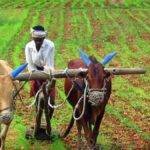Main Points In Hindi (मुख्य बातें – हिंदी में)
यहाँ कुछ मुख्य बिंदु दिए गए हैं जो खाद्य सुरक्षा और संबंधित मुद्दों पर चर्चा करते हैं:
-
खाद्य-जनित रोगजनक: खाद्य सुरक्षा के प्रमुख खतरे भोजन में दूषित बैक्टीरिया (जैसे, ई. कोली और साल्मोनेला) और वायरस (जैसे, नोरोवायरस) से उत्पन्न होते हैं, जो भोजन-जनित बीमारियों का कारण बनते हैं। कनाडा में, अनुमानित हर आठ में से एक व्यक्ति ऐसी बीमारियों से प्रभावित होता है।
-
फफूंद का प्रबंधन: फफूंद प्राकृतिक रूप से खराब भोजन पर उगती है, लेकिन कुछ प्रकार के फफूंद को जानबूझकर पनीर के स्वाद के लिए इस्तेमाल किया जाता है। उपभोक्ता को सतर्क रहना चाहिए कि अगर फफूंद गहरी में घुस गई है, तो भोजन को फेंक देना चाहिए, जबकि सतह पर मौजूद फफूंद को काटना संभव हो सकता है।
-
खाना पकाने की तकनीक: खाद्य सुरक्षा को बेहतर बनाने का सबसे प्रभावी तरीका भोजन को पूरी तरह से पकाना है, विशेषकर पशु उत्पादों के लिए। आंतरिक तापमान सुनिश्चित करना महत्वपूर्ण है, जिससे रोगजनक बैक्टीरिया को समाप्त किया जा सके।
-
सही हाथ धोने और परक्रियाएँ: खाद्य सुरक्षा में नियमित रूप से हाथ धोना, कच्चे मांस को ठंडा रखना और कच्चे मांस को अन्य खाद्य पदार्थों से अलग रखना आवश्यक है। इसके अलावा, कच्चे चिकन जैसे उत्पादों को धोने से बीमारियों का खतरा बढ़ सकता है।
- खाद्य उत्पादों की ताजगी और सुरक्षा: बेस्ट बिफोर डेट केवल खाद्य उत्पाद की ताजगी का संकेत है, जबकि समाप्ति तिथियाँ विशिष्ट पोषण संबंधी आवश्यकताओं के लिए होती हैं। भोजन की सुरक्षा इन तिथियों को देखकर निर्धारित नहीं होती है, और सही तरीके से खाद्य प्रबंधन करने की आवश्यकता होती है।
Main Points In English(मुख्य बातें – अंग्रेज़ी में)
Here are the main points derived from the text on food safety:


-
Foodborne Illnesses: The primary concern in food safety is not food additives or genetically modified organisms but contamination from foodborne pathogens such as bacteria, parasites, and viruses. In Canada, an estimated 1 in 8 people is affected by foodborne illness each year, with vulnerable populations at higher risk.
-
Common Pathogens: Bacteria like E. coli and Salmonella are commonly associated with foodborne illnesses. These pathogens can be spread through poor food handling practices and contaminated water, especially during the processing of raw meats.
-
Mold on Foods: Mold can grow on food in humid environments, and while some molds are intentional (like those in certain cheeses), unintentional mold growth should be approached with caution. Non-penetrable foods like hard cheeses can have mold cut away, while porous foods should be discarded if mold is present.
-
Cooking for Safety: Proper cooking is essential for food safety, specifically reaching appropriate internal temperatures for different foods. Additionally, regular hand washing and separating raw meats from other foods are crucial practices for preventing cross-contamination.
- Understanding Expiration Dates: It’s important to recognize that "best before" dates indicate freshness, not safety. Food can still be safe to eat after this date, while expired foods can pose health risks, especially for vulnerable populations. The Canadian food supply is generally safe, but ongoing research aims to enhance safety measures against pathogens.
Complete News In Hindi(पूरी खबर – हिंदी में)
खाद्य सुरक्षा पर ध्यान देना कम से कम भ्रमित करने वाला हो सकता है – क्रॉस-संदूषण क्या माना जाता है? क्या पाँच सेकंड का नियम वास्तविक है? क्या कच्चा कुकी आटा वास्तव में मुझे साल्मोनेला देगा?
उबिस्सी भूमि और खाद्य प्रणाली संकाय में खाद्य सुरक्षा इंजीनियरिंग के प्रोफेसर डॉ. सियुन वांग से बात की, कि क्या भोजन को सुरक्षित या असुरक्षित बनाता है – और हम खुद को बीमार होने से कैसे रोक सकते हैं।
खाना हमें कैसे बीमार बनाता है?
जब आप खाद्य सुरक्षा के बारे में सोचते हैं, तो आप एडिटिव्स या आनुवंशिक रूप से संशोधित खाद्य पदार्थों के बारे में सोच सकते हैं। लेकिन खाद्य वैज्ञानिकों के अनुसार ये सबसे गंभीर चिंताएं नहीं हैं।
वांग ने कहा, “हम जिन प्रमुख मुद्दों का सामना कर रहे हैं वे आम तौर पर उन खाद्य पदार्थों से जुड़े होते हैं जो खाद्य-जनित रोगजनकों से दूषित होते हैं।”
खाद्य-जनित रोगज़नक़ बैक्टीरिया, परजीवी और वायरस का एक व्यापक वर्ग है जो बीमारी का कारण बन सकता है। कनाडा सरकार अनुमान हर साल आठ में से एक कनाडाई भोजन-जनित बीमारी से प्रभावित होता है, जिसमें कमजोर प्रतिरक्षा वाले लोग अधिक जोखिम में होते हैं।
सबसे आम रोगज़नक़ बैक्टीरिया हैं – ई. कोली या साल्मोनेला के बारे में सोचें। ये रोगज़नक़ खराब खाद्य प्रबंधन प्रथाओं, उत्पादन के बढ़ते चरण या कच्चे मांस के प्रसंस्करण के दौरान दूषित पानी के माध्यम से फैल सकते हैं।
कनाडा में अधिकांश बीमारियाँ और अस्पताल में भर्ती होने का कारण है नोरोवायरस – जिसे आमतौर पर पेट फ्लू के रूप में जाना जाता है – जो पेट या आंतों में सूजन का कारण बनता है। नोरोवायरस सबसे अधिक होता है मिला शंख और सलाद सामग्री में.
साँचे के बारे में क्या?
ढालना एक प्रकार का कवक है जो हाइपहे नामक बहुकोशिकीय फाइबर के समूहों में बढ़ता है। यह गर्म और उच्च नमी वाले वातावरण में पनपता है और बीजाणुओं के माध्यम से प्रजनन करता है। इस वजह से, खराब भोजन पर फफूंद आम है – लेकिन कभी-कभी इनका उपयोग जानबूझकर किया जाता है।
कुछ नरम चीज़ों के लिए, जैसे कि ब्री या ब्लू चीज़, साँचे के विशिष्ट प्रकार होते हैं जानबूझकर उपयोग किया गया पनीर की वसा या प्रोटीन कोशिकाओं को तोड़ने और उसका स्वाद विकसित करने के लिए। इन मामलों में, वांग ने कहा कि इनका सेवन करना सुरक्षित है।
हालाँकि, जब फफूंद अनजाने में बढ़ती है, तो वांग ने कहा कि हमें इसके साथ खाद्य पदार्थों का सेवन करने से पहले सतर्क रहना चाहिए, यह उस भोजन के घनत्व पर निर्भर करता है जिस पर फफूंद लगी है।
“सामान्य तौर पर, यदि भोजन इतना छिद्रपूर्ण है कि उसमें फफूंद घुस सके, तो हमें उसे फेंक देना चाहिए। लेकिन अगर साँचे केवल सतह पर दिखाई दे रहे हैं, तो संभावना है कि हम भोजन के उस हिस्से को काट सकते हैं और उन्हें खा सकते हैं, ”उसने कहा।
अमेरिकी खाद्य सुरक्षा और निरीक्षण सेवा की सिफारिश की गैर-छिद्रपूर्ण और कम नमी वाले खाद्य पदार्थों, जैसे हार्ड पनीर या ठोस सब्जियों और फलों पर मोल्ड के चारों ओर कम से कम एक इंच काट लें, क्योंकि इन परिस्थितियों में मोल्ड आसानी से नहीं फैलता है।
तो… क्या सुरक्षित है?
खाद्य सुरक्षा में सुधार करने का मुख्य तरीका अपने भोजन को पूरी तरह से पकाना है, क्योंकि गर्मी बैक्टीरिया को मारने में प्रभावी है – लेकिन वांग ने कहा कि यह इस बारे में नहीं है कि आप इसे कितनी देर तक पकाते हैं।
“यह, विशेष रूप से पशु-व्युत्पन्न खाद्य उत्पादों के बारे में है, कि हम किस प्रकार के आंतरिक तापमान तक पहुँच रहे हैं।”
आंतरिक तापमान, जो कुछ भी पकाया जा रहा है उसके सबसे मोटे हिस्से के केंद्र में तापमान रीडिंग है। यह पर्वतमाला मध्यम-दुर्लभ स्टेक जैसी वस्तुओं के लिए 63ºC से लेकर संपूर्ण पोल्ट्री के लिए 82ºC के बीच।
यह भी महत्वपूर्ण है नियमित रूप से धोएं अपने हाथों और सतहों पर, कच्चे मांस या समुद्री भोजन को ठंडा रखें और अपने फ्रिज में कच्चे मांस, पोल्ट्री, मछली और समुद्री भोजन को अन्य खाद्य पदार्थों से अलग रखें।
हालाँकि, वांग ने विरोधाभासी होते हुए भी उन खाद्य पदार्थों को न धोने के महत्व पर ध्यान दिया, जिनमें रोगज़नक़ हो सकते हैं और जिन्हें पकाया जाएगा, जैसे कि कच्चा चिकन।
“इन उत्पादों को धोकर, आप अनिवार्य रूप से संभावित हानिकारक बैक्टीरिया फैला रहे हैं।”
अधिकांश खाद्य पदार्थों में सर्वोत्तम पूर्व या समाप्ति तिथि होती है, जो उपभोक्ताओं के लिए एक मुश्किल अवधारणा हो सकती है, क्योंकि यह इस बात का संकेतक नहीं है कि भोजन खाने के लिए कितना सुरक्षित है।
वांग ने कहा, “सबसे अच्छी तारीख वास्तव में इस बात का संकेतक है कि भोजन कितना ताज़ा है।” “तो मूल रूप से, यदि आप इसे सर्वोत्तम तिथि से पहले खा रहे हैं, तो ताजगी, स्वाद, पोषण मूल्य समान नहीं हो सकता है।”
उन्होंने कहा कि बेस्ट बिफोर डेट से पहले खाना खाना अभी भी सुरक्षित हो सकता है, जबकि बेस्ट बिफोर डेट से पहले खाना खाना असुरक्षित हो सकता है।
इसके विपरीत, समाप्ति तिथियां केवल उन विशिष्ट खाद्य पदार्थों पर पाई जाएंगी जिनकी सख्त पोषण संबंधी आवश्यकताएं हैं, जैसे कि शिशु फार्मूला या भोजन प्रतिस्थापन। एक बार जब वे अपनी समाप्ति तिथि पार कर लेते हैं, तो पोषण संबंधी आवश्यकताएं मेल नहीं खा सकती हैं और उन विशिष्ट, समझौता आबादी को नुकसान पहुंचा सकती हैं।
लेकिन दिन के अंत में, वांग ने कहा कि यह याद रखना महत्वपूर्ण है कि कनाडा की खाद्य आपूर्ति काफी सुरक्षित है और शोधकर्ता इसे और भी सुरक्षित बनाने के तरीकों पर काम कर रहे हैं।
“लोग हमारी खाद्य आपूर्ति से इन रोगजनकों से छुटकारा पाने के लिए प्रयास कर रहे हैं, और इसीलिए हमें इनका पता लगाने के लिए नवीन समाधानों की आवश्यकता है।”
इस लेख का हिस्सा
Complete News In English(पूरी खबर – अंग्रेज़ी में)
Food safety can be quite confusing. What exactly is cross-contamination? Is the five-second rule real? Will eating raw cookie dough really give me salmonella?
Ubicci spoke with Dr. Siun Wang, a professor of food safety engineering, about what makes food safe or unsafe, and how we can prevent ourselves from getting sick.
How Does Food Make Us Sick?
When thinking about food safety, you might consider additives or genetically modified foods. However, food scientists say these are not the biggest concerns.
Wang explained, “The major issues we face are generally related to foods contaminated with foodborne pathogens.”
Foodborne pathogens include a wide range of bacteria, parasites, and viruses that can cause illness. The Canadian government estimates that one in eight Canadians is affected by foodborne illnesses each year, with those with weakened immune systems at higher risk.
The most common harmful bacteria include E. coli and salmonella. These pathogens can spread through poor food management practices, during the growing phase, or through contaminated water when processing raw meat.
In Canada, most illnesses and hospitalizations are caused by norovirus, commonly known as the stomach flu, which causes inflammation in the stomach or intestines. Norovirus is most often found in shellfish and salad ingredients.
What About Mold?
Mold is a type of fungus that grows in multicellular fibers called hyphae. It thrives in warm, humid environments and reproduces through spores. For this reason, mold is common on spoiled food, but sometimes it is intentionally used.
Certain soft cheeses, like Brie or blue cheese, use specific types of mold intentionally to break down fats or proteins and develop flavors. In these cases, Wang said, it is safe to consume.
However, when mold grows unintentionally, Wang advised us to be cautious about consuming those foods, depending on how dense the food is on which the mold has appeared.
“Generally, if the food is porous enough for mold to penetrate, we should throw it away. But if the mold is only on the surface, it’s likely we can cut away that part and still eat the rest,” she said.
The USDA’s Food Safety and Inspection Service recommends that for non-porous and low-moisture foods like hard cheese or solid vegetables and fruits, you should cut away at least one inch around the mold since it does not spread easily in these cases.
So… What is Safe?
The main way to improve food safety is by cooking food thoroughly, as heat is effective in killing bacteria. However, Wang noted that it’s not just about how long you cook it.
“It’s particularly about what internal temperature we reach, especially with animal-derived products.”
The internal temperature is the reading at the thickest part of whatever is being cooked. It ranges from 63ºC for medium-rare steak to 82ºC for whole poultry.
It’s also important to wash your hands and surfaces regularly, keep raw meat or seafood refrigerated, and keep raw meat, poultry, fish, and seafood separate from other foods in your fridge.
However, Wang emphasized the importance of not washing foods that could harbor pathogens and will be cooked, like raw chicken.
“By washing these products, you may inadvertently spread harmful bacteria.”
Most foods have best-before or expiration dates, which can be a confusing concept for consumers as it does not indicate how safe it is to eat.
Wang said, “The best before date actually indicates how fresh the food is.” “So basically, if you’re eating it before the best before date, it doesn’t necessarily mean its freshness, taste, or nutritional value is still the same.”
She noted that food eaten before the best before date can still be safe, while food after that date can be unsafe.
In contrast, expiration dates will only be found on specific foods with strict nutritional requirements, such as baby formula or meal replacements. Once they pass their expiration date, the nutritional needs may not be met and could harm specific vulnerable populations.
But at the end of the day, Wang emphasized that it’s important to remember that Canada’s food supply is quite safe and researchers are working to make it even safer.
“People are working to eliminate these pathogens from our food supply, and that’s why we need innovative solutions to detect them.”
Share this article










